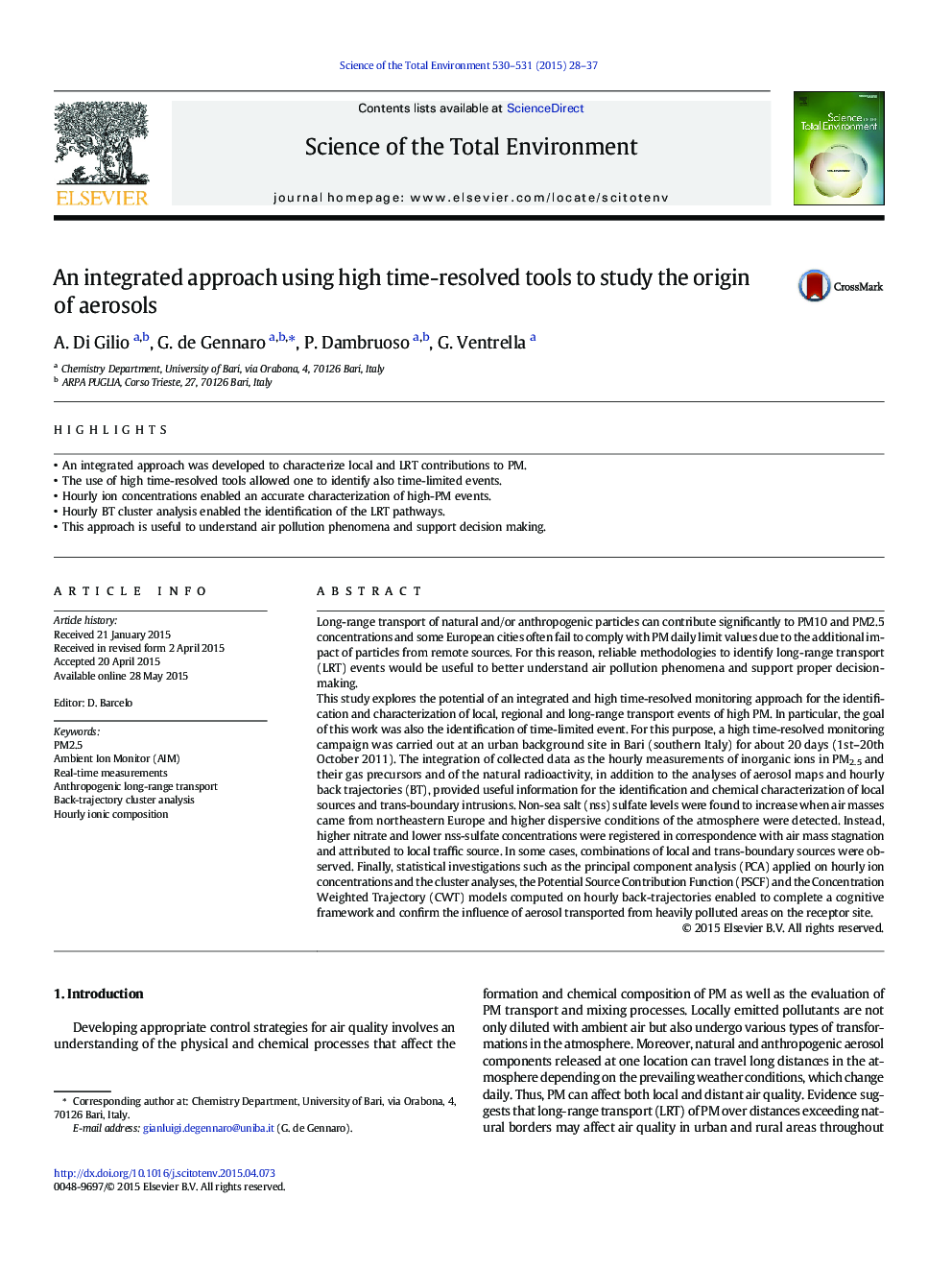| Article ID | Journal | Published Year | Pages | File Type |
|---|---|---|---|---|
| 6325562 | Science of The Total Environment | 2015 | 10 Pages |
Abstract
This study explores the potential of an integrated and high time-resolved monitoring approach for the identification and characterization of local, regional and long-range transport events of high PM. In particular, the goal of this work was also the identification of time-limited event. For this purpose, a high time-resolved monitoring campaign was carried out at an urban background site in Bari (southern Italy) for about 20Â days (1st-20th October 2011). The integration of collected data as the hourly measurements of inorganic ions in PM2.5 and their gas precursors and of the natural radioactivity, in addition to the analyses of aerosol maps and hourly back trajectories (BT), provided useful information for the identification and chemical characterization of local sources and trans-boundary intrusions. Non-sea salt (nss) sulfate levels were found to increase when air masses came from northeastern Europe and higher dispersive conditions of the atmosphere were detected. Instead, higher nitrate and lower nss-sulfate concentrations were registered in correspondence with air mass stagnation and attributed to local traffic source. In some cases, combinations of local and trans-boundary sources were observed. Finally, statistical investigations such as the principal component analysis (PCA) applied on hourly ion concentrations and the cluster analyses, the Potential Source Contribution Function (PSCF) and the Concentration Weighted Trajectory (CWT) models computed on hourly back-trajectories enabled to complete a cognitive framework and confirm the influence of aerosol transported from heavily polluted areas on the receptor site.
Keywords
Related Topics
Life Sciences
Environmental Science
Environmental Chemistry
Authors
A. Di Gilio, G. de Gennaro, P. Dambruoso, G. Ventrella,
